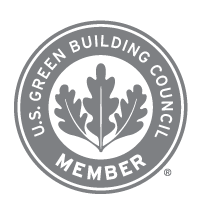Asphalt Surface Treatments FAQs
Category: Blog Articles By: Chris Evers
Time to get real for this blog! When it comes to asphalt road surface treatments not every product is created equal. It’s assumed by most that when you do pavement preservation treatments on top of aging asphalt pavement the results will be added life, better aesthetics, and a safer surface for the driving public. However, that’s not always the case. Some products that are commonly applied on asphalt pavements and marketed as pavement preservation can lead to faster deterioration and unsafe conditions for drivers or residents.
Instead of the standard format for a Frequently Asked Questions article, we’re going to flip it. Here are the top questions you should be asking about the Asphalt Surface Treatment you’re considering using.
Question 1: Is this stuff safe?
We’ve all heard the “safety first” mantra repeated ad nauseum and many companies do personify it. The number one question we should always ask before specifying or allowing the application of a material is: “does this material carry any human health or environmental hazards associated with it’s use?” The Safety Data Sheet (SDS) should be produced before any contractor is allowed to apply material to any pavement. What is in Safety Data Sheets? According to OSHA, “the SDS includes information such as the properties of each chemical; the physical, health, and environmental health hazards; protective measures; and safety precautions for handling, storing, and transporting the chemical.” It should ideally look like this, with very little in the way of hazards to people, pets, or the environment.
What we don’t want to see present in the material on an SDS are specific health risks such as cancer, the presence of VOCs (Volatile Organic Compounds), highly flammable or unstable chemicals, or highly regulated chemicals. On a “clean” SDS, you’ll see mostly “Not Classified,” “Not Regulate,” and perhaps an occasional “Not Available.”
Question 2: What is the long-term performance of the product?
When you ask the contractor or supplier this question, the ideal response would be to send you to some independently researched reports and laboratory results, before and after pictures, case studies, or even some good old-fashioned testimonials from other public works agencies, DOTs or property managers who have had success with the material.
The further back such third-party data goes, the better. When I say “third party,” that means it’s not just the company’s own marketing materials. Good “third-party” or independent data comes from public agencies, universities, accredited labs or testing firms, or even industry trade associations. The data in them may have been provided by the contractor or supplier, but the data cannot have been generated by the organization that is making the material.
Question 3: What does it do and how does it work?
Lastly the idea with this two-part question is to better understand whether the asphalt surface treatment being evaluated is the right tool to address the dominant distress or mode of failure on the pavement to be treated. Is this tool being applied at the right time and will it successfully preserve the pavement?
There are lots of great pavement preservation tools available, but what separates a good asphalt treatment from a bad one (assuming questions one and two were answered satisfactorily) is the selection of the right tool at the right time in the lifecycle of the pavement. If the aim is to rejuvenate the asphalt while it’s in good condition, the key element is that the rejuvenator should be penetrating the pavement, restoring to it the maltene fractions of the asphalt that are oxidized over time.
Understanding how a material works, and what its short-term and long-term performance outcomes will be, is critical to making a sound decision. A short-term improvement in aesthetics is of little use if a material’s long-term outcome is detrimental to the pavement.







